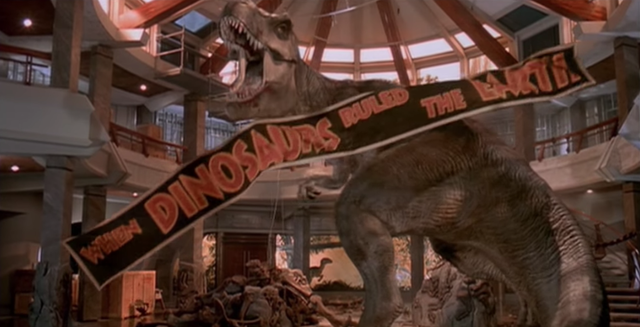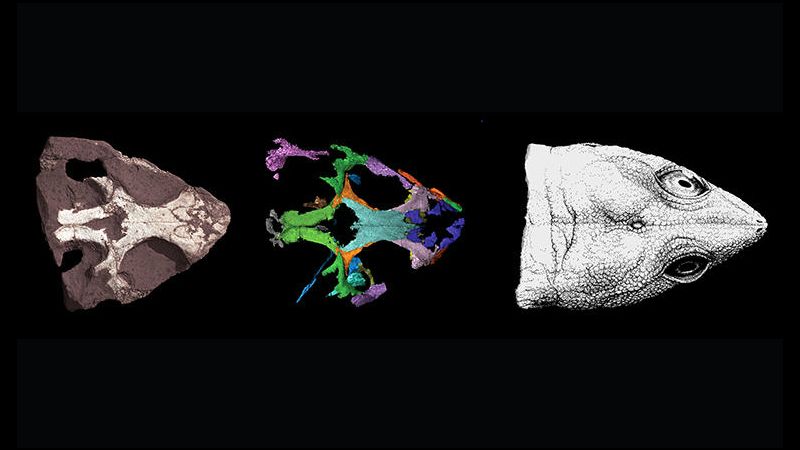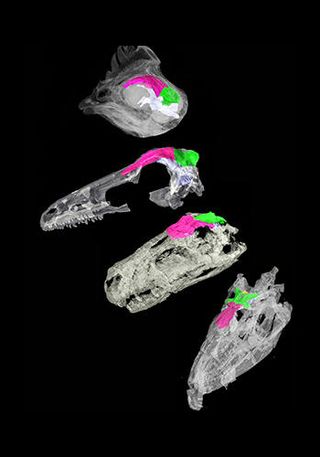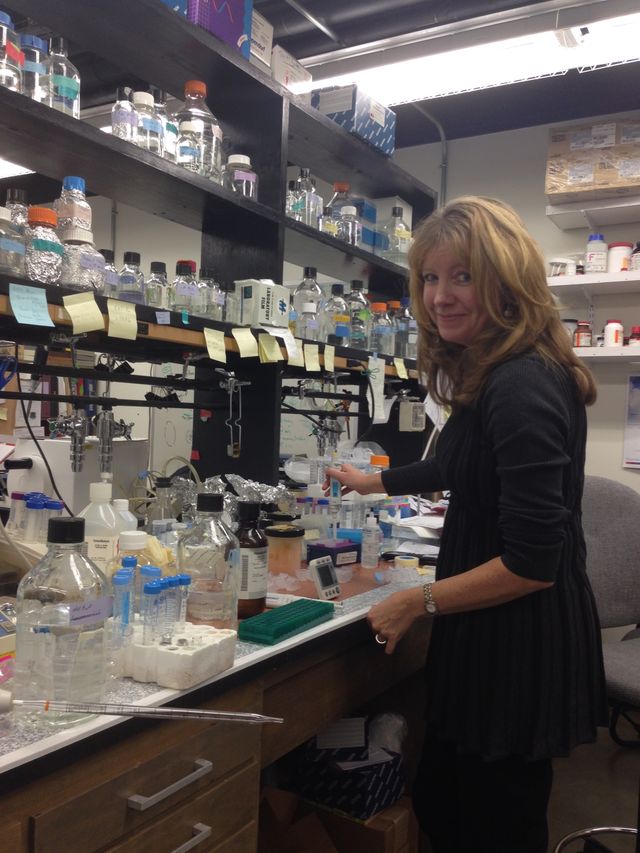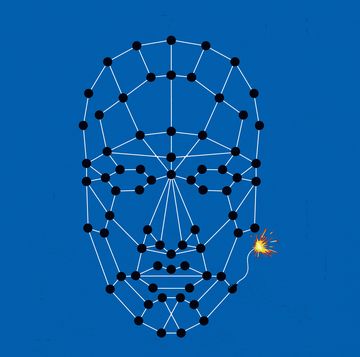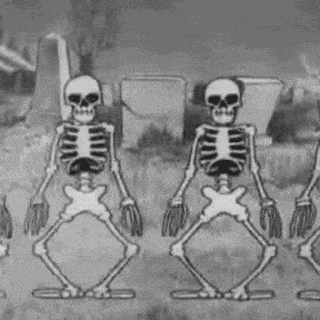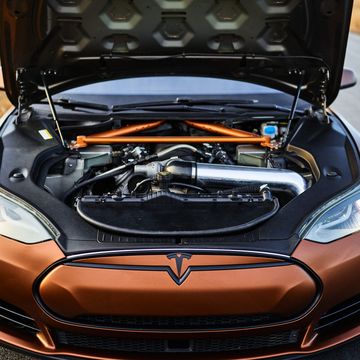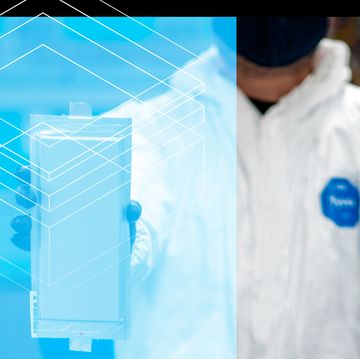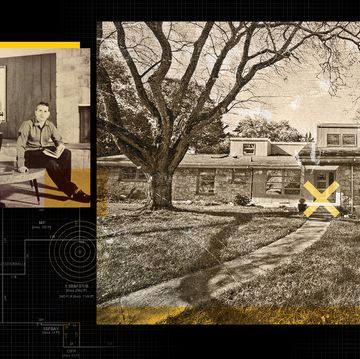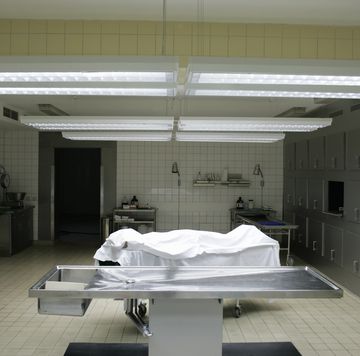Almost thirty years ago, Jurassic Park roared its way into theaters worldwide. And though the action-packed dino flick would inspire a new generation of paleontologists, director Steven Spielberg packed in more science fiction than actual science.
Since the film's 1993 debut, scientists have discovered that velociraptors were actually feathered, Dilophosauruses definitely didn’t spit poison, and a T-Rex’s vision was very much not based on movement. Even the very premise of the film—resurrecting dinosaurs with DNA extracted from ancient mosquitoes—is now considered likely impossible.
But despite these scientific lapses, Jurassic Park did ask one important question: Could dinosaurs one day walk among humans? It's something we're still asking ourselves as the next installment of the franchise, Jurassic World: Fallen Kingdom, hits theaters on June 22.
“If you don’t have time to wait for evolution to change the way [an animal] looks, modern technology can do that,” says Jack Horner, famed paleontologist and consultant on all five Jurassic Park movies. “We have all kinds of... biological modification tools. The possibility of creating a dinosaur exists right now.”
The Jurassic Park Effect
Jurassic Park was more than a best-selling book and cinematic phenomenon. Spielberg's classic also ushered in a “golden age of dinosaur discovery.”
According to NBC News, in the decade prior to the release of Jurassic Park, paleontologists discovered about new 15 species of dinosaurs per year. Over the last decade, that rate of discovery has increased to about one species a week. That list includes a near complete skeleton of a massive plant eater the size of a dozen African elephants and a small, fast, quail-like dinosaur that one paleontologist dubbed a “fluffy feathered poodle from hell.”
Jurassic Park can’t take all the credit. Countries are allowing international access to dig sites and technology is speeding up the search, but the movie certainly helped to light the spark. In 2018 there are nearly four times more active dinosaur paleontologists than there were three decades ago—a result of what’s known as the “Jurassic Park effect.”
“I have a near-photographic memory of the helicopter ride to the island...and [that] first shot of the Brachiosaurus,” says Yale paleontologist Bhart-Anjan Bhullar, who was nine when the movie came out. “I saw it two or three times in the theater.”
The Amber Illusion
But what makes up accurate science and what works at the box office are rarely the same thing, and that includes cloning a dinosaur. Recent findings have shown that DNA sequences long enough to be usable and readable for cloning purposes probably can’t survive more than 1.5 million years with the oldest known DNA sample coming from a 700,000-year-old horse. With dinosaurs exiting the world stage some 65 million years ago, finding useful dino DNA trapped in amber is probably pure science fiction.
“We can find fragments of DNA [in dinosaur fossils], but not enough of a genome to activate it,” says Mark Norell, Chair and Macaulay Curator in the American Museum of Natural History's Division of Paleontology. “The chances of finding a whole genome is nearly impossible.”
More than that, we don’t have the genetic blueprint for cloning a dinosaur.
“In what order are those genes expressed? What chromosomes are they lined upon?,” asks evolutionary biologist Mary Schweitzer, an expert in extracting proteins from dinosaur fossils. “Those are not coded for in the DNA. If you get it wrong, you don’t get a dinosaur. I think [cloning a dinosaur from DNA] is insurtomable with the technology we have anytime in the foreseeable future.”
From Jurassic Park to the Pigeon
Creating a clone from dino DNA maybe a scientific dead-end, but the idea of bringing back dinosaurs is far from extinct.
In 2009, Horner co-wrote a book titled How to Build a Dinosaur, proposing the wild idea of taking a chicken embryo and genetically modifying it so that it hatched with a head, teeth, claws, and tail like its ancient ancestor, a velociraptor. He calls this ancient world hybrid a “dino-chicken.”
“The question in my mind [back then] is, could we back the whole process up?” Horner told Popular Mechanics. “Could we start with a bird and retro engineer a dinosaur out of it? Yeah, I thought it could be done.”
This kind of out-of-the-box thinking would inspire some truly revolutionary research. In 2015, Bhullar and his colleagues showed that it was potentially possible to reverse-engineer evolution by using what we’ve learned over the last two decades and taking advantage of newly developed technologies.
For example, one of the most distinctive features of a bird is its beak, but fossil records show that dinosaurs definitely had snouts with razor sharp teeth. So, how and when in its 65-million-year-long evolutionary chain did those toothed snouts give way to modern beaks?
To figure out the answer, researchers used a technique called “geometric morphometrics,” in which a computer compiles hundreds of skeletal and skull images from numerous ancestral animals—including dino fossils, birds, crocodiles, and lizards—and creates a series of 3D scans of their shape.
These models are compared to one another to determine the precise differences in bone size, shape, and configuration among the specimens. The data narrow the search and can lead to finding exact genes and proteins that over the slow course of evolution created the bird beak of today. With this information, scientists used tiny beads coated with protein inhibitors that blocked protein activity, and which lead to bird-specific gene expressions in the embryonic chicken reverting to its ancestral anatomy.
Two years after this breakthrough research, another study by evolutionary biologists from John Hopkins and Beijing built upon this finding and further cemented the transition from sharp-toothed snouts to pointy beaks, or “the line of evolution from a Tyrannosaurus rex to a pigeon.”
Over the last decade, researchers have found that birds still possess the ability to grow razor-sharp teeth, develop dinosaur toes, and still have similar jaws as their ancestors. To Horner, all of this further cements his 2009 theory of manipulating a chicken embryo into having dinosaur characteristics.
Now he wants to hatch a dino-chicken.
Modern Science Meets 65-Million-Year-Old Biology
The way Horner explains it, creating a dino-chicken doesn’t seem complicated at all.
“It’s basically opening up one egg at a time and going in and retrieving RNA,” he says. “And, then, opening up another egg and using a gene switch...and inserting back into each cell something that either turns on a particular gene or turns it off. It’s just gene switching, that’s all it is.”
The process or “turning off” a gene would cause certain parts of the anatomy to revert to its prehistoric state, essentially deleting millions of years of evolution. It closely follows the same method Bhullar used in embryos in 2015, but now Horner believes the technology is ready to handle such a complicated procedure.
The system called CRISPR/Cas9 is the premier tool of the modern genetic engineer. This system of genetic guides and enzymes can find, cut, and edit DNA; it's the most commonly employed of the CRISPR technologies. Wired compares it to the “genetic equivalent of Microsoft Word." CRISPR/Cas9 was first used in the yogurt and cheese industry about a decade ago. In the span of only a few years, this gene-editing system showed such potential that it could alter virtually any living organism, including humans.
Of course, there are risks. CRISPR is still imprecise, sometimes binding to or cutting the wrong gene. But the system remains the best tool for gene targeting methods, and scientists are still figuring out the safest ways to use it. Horner believes CRISPR is the tool scientists have been waiting for to finally bring dinosaurs—or at least a hybrid version—back from extinction.
“This chicken when it hatches out... will have a weird looking head that won’t look like a bird. It will walk a little different than chickens do. And it will have arms and hands and it will have a long, boney tail,” says Horner. “It will look more like a dinosaur than a chicken.”
Stopping To Think If We Should
Echoing Ian Malcolm’s dire warning in Jurassic Park, other paleontologists and evolutionary biologists are not as enthusiastic about hatching a dino-chicken.
Dana Rashid, an evolutionary biologist at Montana State University who worked with Horner and now runs the so-called DinoChicken lab after Horner retired in 2016, says that while it’s “theoretically possible” to hatch a dino-chicken in five years or so, it shouldn’t be a goal.
Instead, Rashid continues studying the tail evolution from dinosaurs to birds over the last 150 million years and has already discovered some amazing things. She’s found that it required far fewer mutations that previously thought to go from the long tails of dinosaurs to the short, fused tails of today’s birds.
While this work can certainly be used in conjunction with Horner’s mission to engineer a dino-chicken, Rashid says this dino-tail study could help treat Ankylosing Spondylitis, a fairly common condition in which vertebrae fuse. Affecting 1 in 140 people, it’s the primary cause of non-injury related back pain in adolescents.
“In trying to understand the biology of the tail in birds, we found a lot of parallels to this disease,” says Rashid, “I... have some evidence to what that [genetic] trigger might be. While we can’t share what that is yet, we’re pretty excited about it.”
Experimenting with gene switching, retro engineering, and growing prehistoric-like tails could also have other fascinating medical implications. “If we can figure out how to extend the tail, there could be applications for people who become paralyzed because of spinal accidents.” She calls Horner a visionary and a genius, but says that we shouldn’t just be “making a dino-chicken for the heck of it.”
Other scientists also disagree with Horner’s dino-chicken research, some more harshly than others. While Norell acknowledges that we know a lot more about gene switching, dinosaur traits, and evolution than we did 25 years ago, he thinks we are still way far off from actually creating a dinosaur. He’s concerned that switching one or two genes will have an unknown effect on other cells in the organism. He also thinks that this “engineering” will not make a dinosaur.
“We can create all kinds of weirdo stuff by modifying a gene here and there,” says Norell, “We could modify humans to have a tail. That doesn’t make us a non-humanoid monkey. That just makes us a human with a tail.”
Schweitzer is a former student of Horner’s, but she wonders about the ethical question of creating such a creature. “You got one chicken with a velociraptor head and tail. We’ve proven we can do it, so we are real cool, but it’s cruel,” says Schweitzer. “Bringing an organism back... just to prove you can, it’s a waste.”
But Horner believes that we are so far along in the process already, that he’d only need an additional “$300,000 to a million dollars” and just one year to physically hatch an animal unlike anything Earth has seen in millions of years.
“I don’t see any difference between a dino-chicken and a chihuahua,” says Horner, “It’s just another genetically modified animal.”
But lab-based genetic modification is natural evolution set to maximum overdrive. Even the English Bulldog, sometimes referred to as a “genetic monstrosity,” took decades to create.
“I think.. it’s hubris,” says Schweitzer, “Humans are amazingly short-sighted and never think about the long term ramifications of messing with a genome of a complex organism. Building something just because we can is going to get us in trouble.”
Buried beneath mounds of disproven dinosaur science and new-age genetic modification, there’s still the issue that was raised on screen 25 years ago by Dr. Malcolm: We are so preoccupied with if we could, we are not stopping to ask if we should.
It's this scientific balance between what's possible and what's ethical that remains Jurassic Park's lasting truth.
Matt is a history, science, and travel writer who is always searching for the mysterious and hidden. He's written for Smithsonian Magazine, Washingtonian, Atlas Obscura, and Arlington Magazine. He calls Washington D.C. home and probably tells way too many cat jokes.
